
How to Use Buzzer: Examples, Pinouts, and Specs
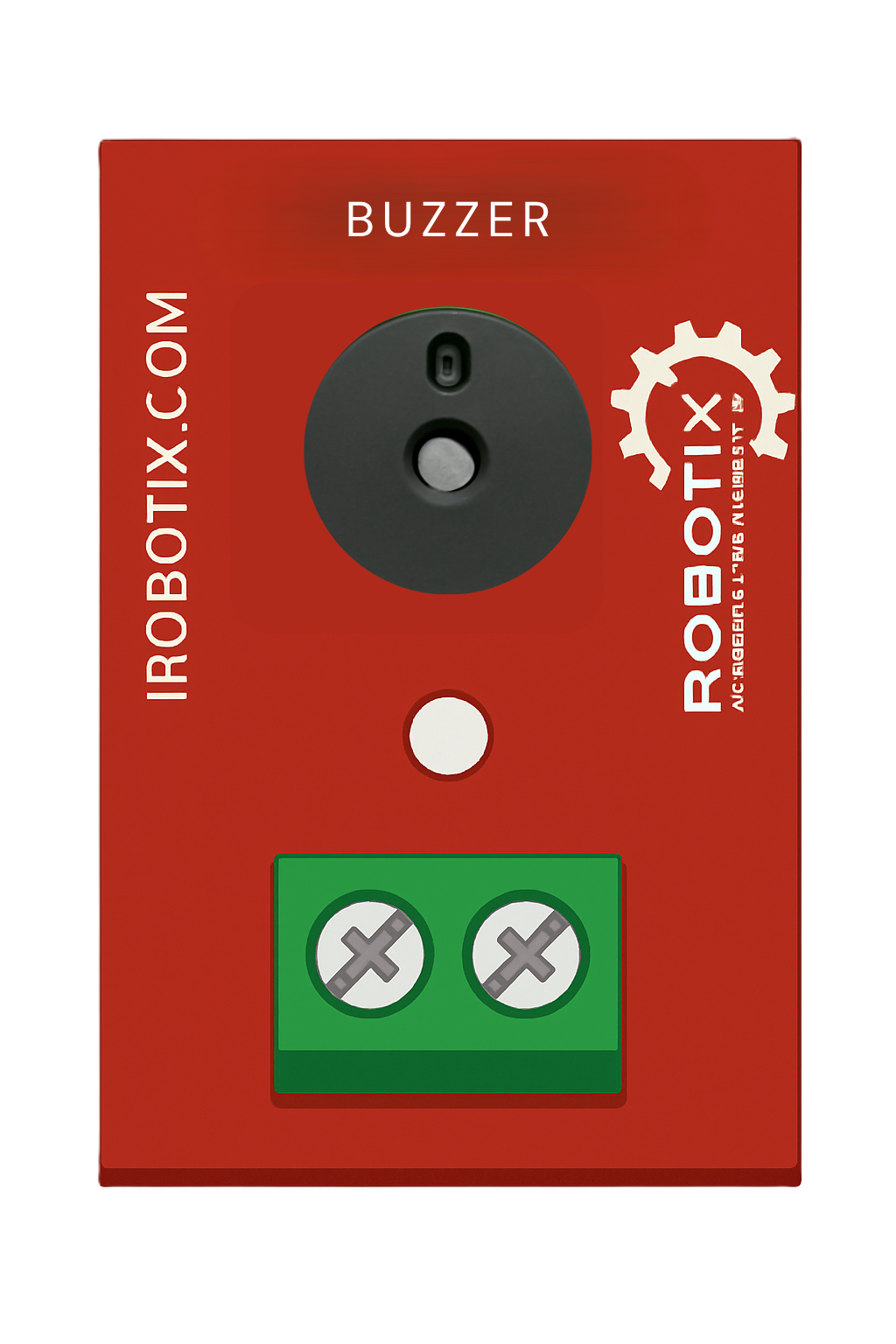
 Design with Buzzer in Cirkit Designer
Design with Buzzer in Cirkit DesignerIntroduction
A buzzer is an audio signaling device that produces sound when an electric current passes through it. Manufactured by Anand with the part ID Buzzer-1, this component is widely used in various applications where audible alerts or notifications are required. It is compact, easy to use, and highly reliable, making it a popular choice for both hobbyist and professional projects.
Explore Projects Built with Buzzer
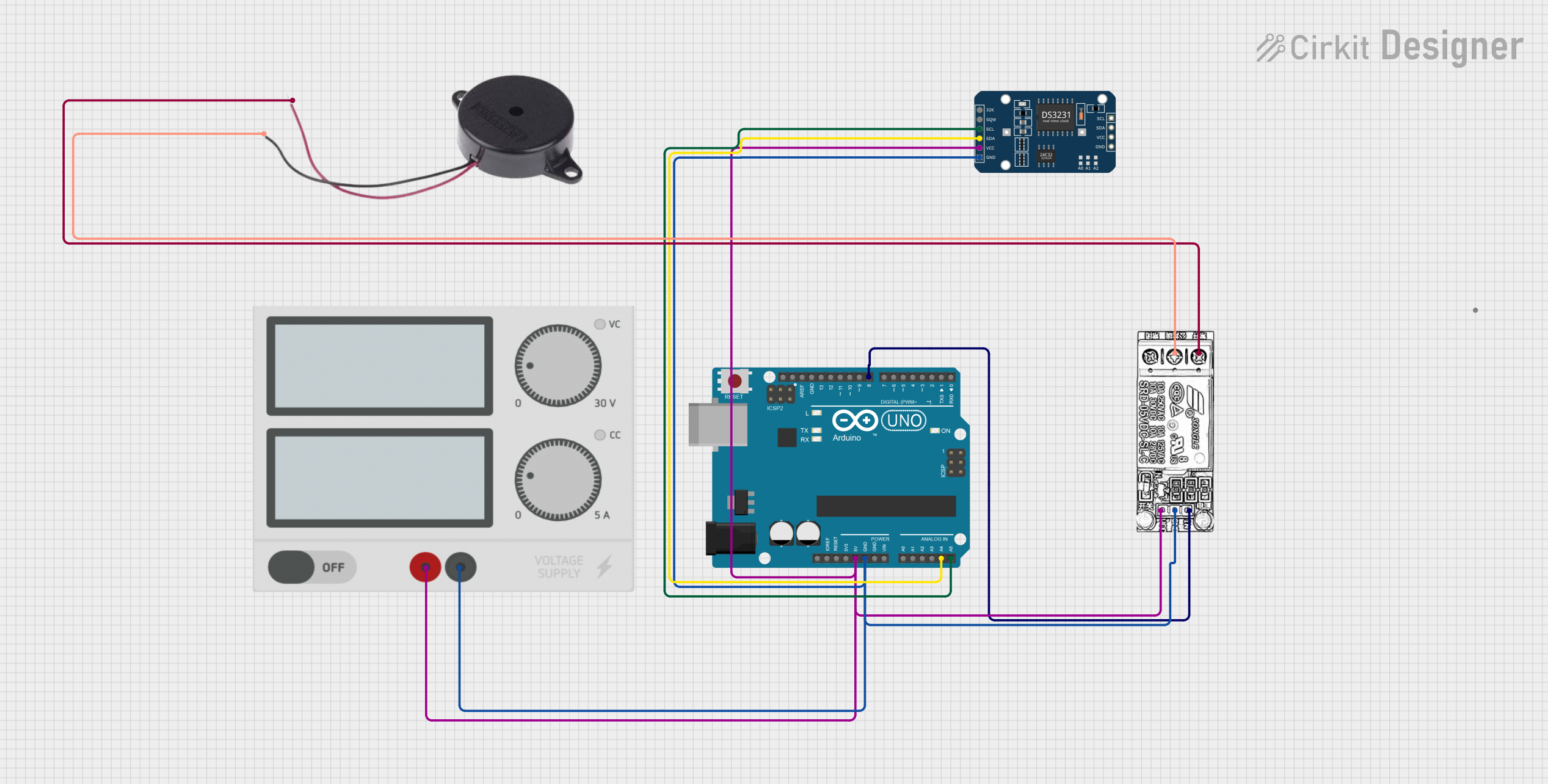
 Open Project in Cirkit Designer
Open Project in Cirkit Designer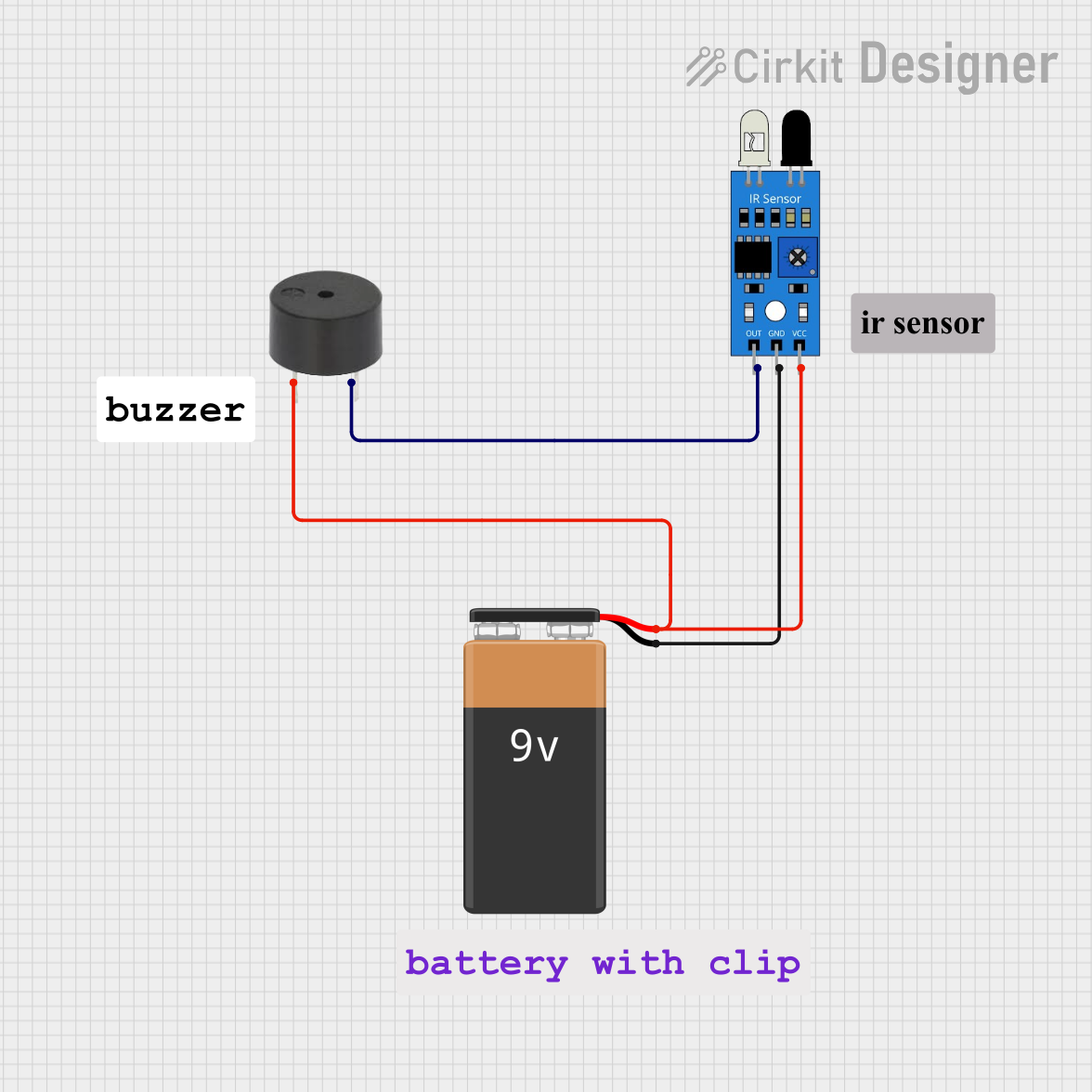
 Open Project in Cirkit Designer
Open Project in Cirkit Designer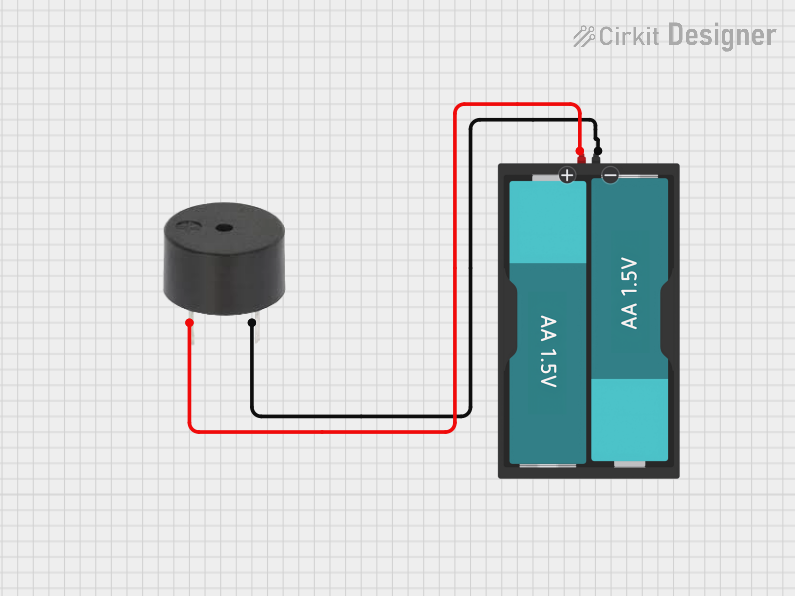
 Open Project in Cirkit Designer
Open Project in Cirkit Designer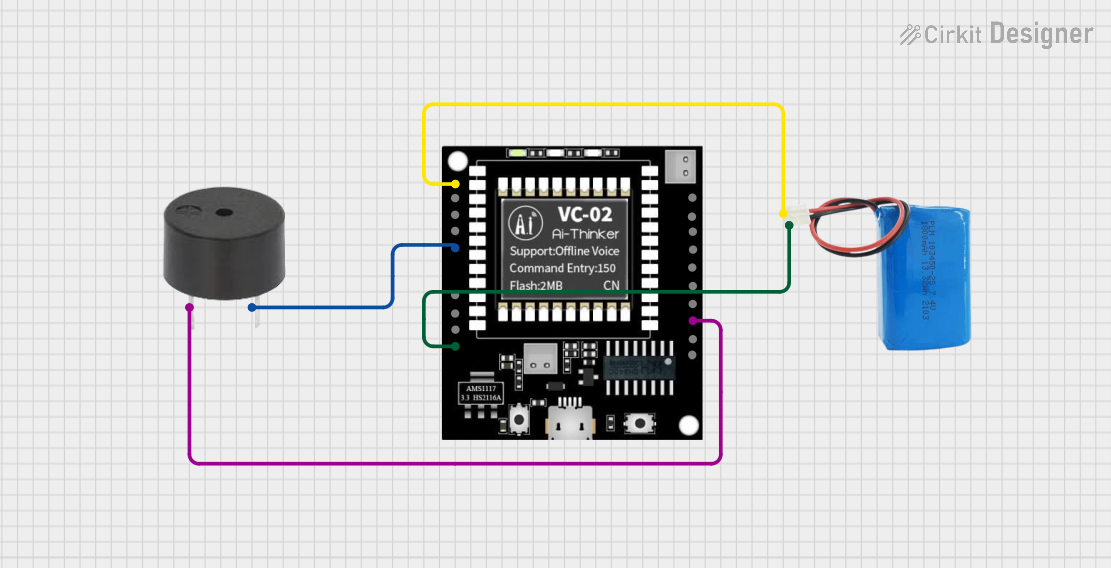
 Open Project in Cirkit Designer
Open Project in Cirkit DesignerExplore Projects Built with Buzzer

 Open Project in Cirkit Designer
Open Project in Cirkit Designer
 Open Project in Cirkit Designer
Open Project in Cirkit Designer
 Open Project in Cirkit Designer
Open Project in Cirkit Designer
 Open Project in Cirkit Designer
Open Project in Cirkit DesignerCommon Applications and Use Cases
- Alarm systems (e.g., burglar alarms, fire alarms)
- Timers and reminders
- Notification systems in appliances (e.g., microwave ovens, washing machines)
- Feedback systems in electronic devices
- Educational and DIY electronics projects
Technical Specifications
The Anand Buzzer-1 is a simple yet versatile component. Below are its key technical details:
General Specifications
| Parameter | Value |
|---|---|
| Operating Voltage | 3V to 12V DC |
| Rated Voltage | 5V DC |
| Current Consumption | ≤ 30 mA |
| Sound Output | 85 dB at 10 cm (typical) |
| Frequency Range | 2 kHz to 4 kHz |
| Operating Temperature | -20°C to +60°C |
| Dimensions | 12 mm (diameter) x 8 mm |
Pin Configuration
The Buzzer-1 has two pins for electrical connections. The table below describes the pin configuration:
| Pin Number | Name | Description |
|---|---|---|
| 1 | Positive (+) | Connect to the positive terminal of the power supply or control signal. |
| 2 | Negative (-) | Connect to the ground (GND) of the circuit. |
Usage Instructions
Using the Buzzer-1 in a circuit is straightforward. Follow the steps below to integrate it into your project:
Basic Circuit Connection
- Power Supply: Connect the positive pin of the buzzer to the positive terminal of the power supply (e.g., 5V DC).
- Ground Connection: Connect the negative pin of the buzzer to the ground (GND) of the circuit.
- Control Signal (Optional): If you want to control the buzzer using a microcontroller (e.g., Arduino), connect the positive pin to a digital output pin of the microcontroller through a current-limiting resistor (e.g., 220Ω).
Example: Connecting to an Arduino UNO
Below is an example of how to connect and control the Buzzer-1 using an Arduino UNO:
Circuit Diagram
- Connect the positive pin of the buzzer to Arduino digital pin 8.
- Connect the negative pin of the buzzer to the Arduino GND.
Arduino Code
// Buzzer Control Example
// This code demonstrates how to turn the buzzer on and off using an Arduino UNO.
#define BUZZER_PIN 8 // Define the pin connected to the buzzer
void setup() {
pinMode(BUZZER_PIN, OUTPUT); // Set the buzzer pin as an output
}
void loop() {
digitalWrite(BUZZER_PIN, HIGH); // Turn the buzzer ON
delay(1000); // Wait for 1 second
digitalWrite(BUZZER_PIN, LOW); // Turn the buzzer OFF
delay(1000); // Wait for 1 second
}
Important Considerations and Best Practices
- Voltage Range: Ensure the operating voltage is within the specified range (3V to 12V DC). Exceeding this range may damage the buzzer.
- Current Limiting: Use a current-limiting resistor if the buzzer is connected to a microcontroller to prevent excessive current draw.
- Polarity: Always connect the positive and negative pins correctly. Reversing the polarity may result in malfunction or damage.
- Mounting: Secure the buzzer in place to prevent vibrations from affecting its performance.
Troubleshooting and FAQs
Common Issues and Solutions
No Sound from the Buzzer:
- Check the power supply voltage and ensure it is within the operating range.
- Verify the polarity of the connections (positive and negative pins).
- Ensure the control signal (if used) is correctly configured in the circuit.
Buzzer Produces Weak or Distorted Sound:
- Confirm that the power supply provides sufficient current (≥ 30 mA).
- Check for loose or poor connections in the circuit.
- Ensure the buzzer is not exposed to extreme temperatures beyond its operating range.
Buzzer Overheats:
- Verify that the operating voltage does not exceed the rated voltage (5V DC).
- Use a current-limiting resistor if necessary.
FAQs
Q1: Can I use the buzzer with an AC power supply?
A1: No, the Buzzer-1 is designed for DC power only. Using an AC power supply may damage the component.
Q2: How can I make the buzzer produce different tones?
A2: You can generate different tones by using a microcontroller (e.g., Arduino) to send a PWM (Pulse Width Modulation) signal to the buzzer. Adjust the frequency of the PWM signal to change the tone.
Q3: Is the buzzer waterproof?
A3: No, the Buzzer-1 is not waterproof. Avoid exposing it to moisture or water.
Q4: Can I use the buzzer in battery-powered projects?
A4: Yes, the buzzer is suitable for battery-powered projects as long as the voltage is within the operating range.
By following this documentation, you can effectively integrate the Anand Buzzer-1 into your projects and troubleshoot any issues that may arise.